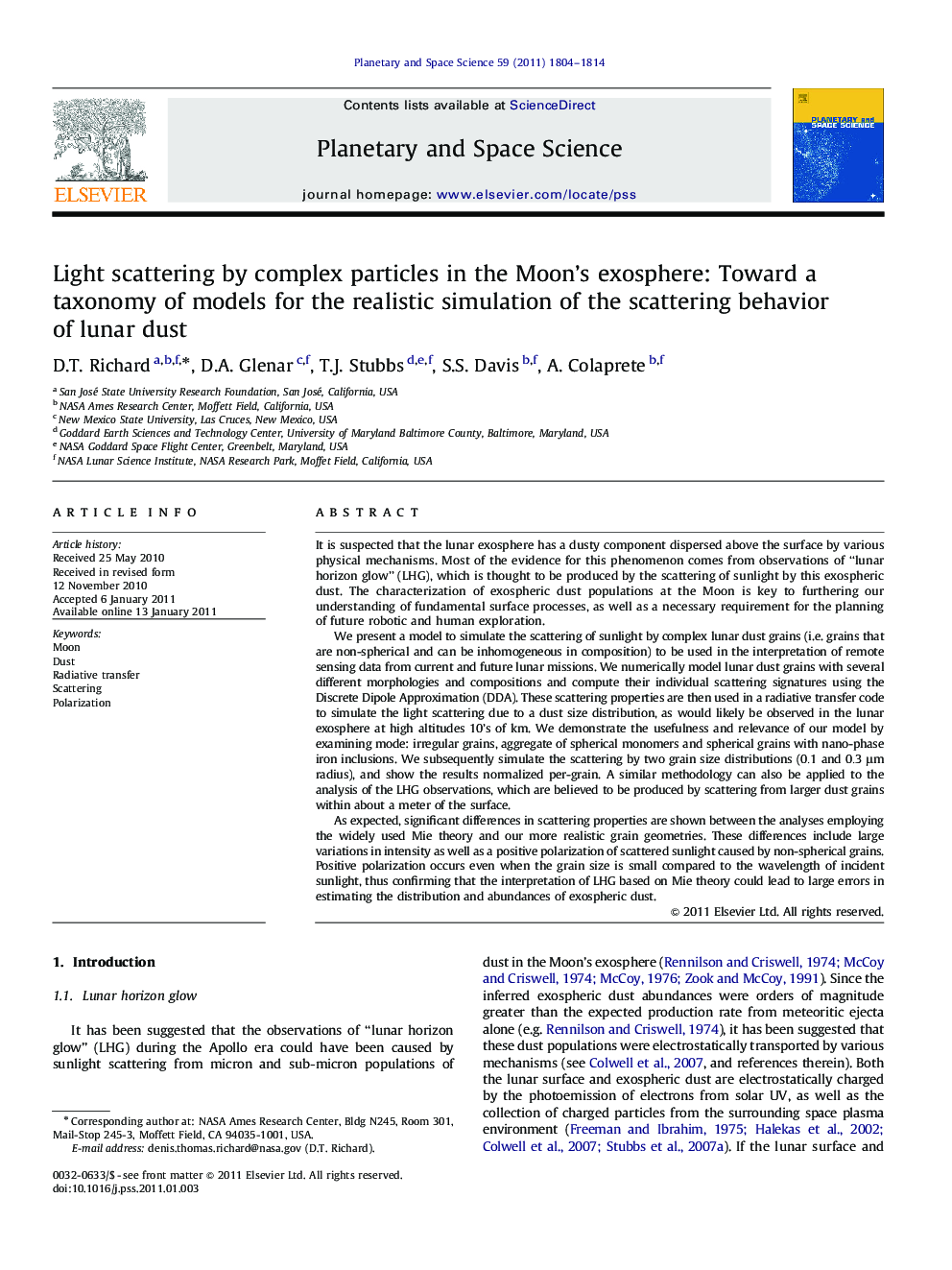| کد مقاله | کد نشریه | سال انتشار | مقاله انگلیسی | نسخه تمام متن |
|---|---|---|---|---|
| 1781633 | 1022293 | 2011 | 11 صفحه PDF | دانلود رایگان |

It is suspected that the lunar exosphere has a dusty component dispersed above the surface by various physical mechanisms. Most of the evidence for this phenomenon comes from observations of “lunar horizon glow” (LHG), which is thought to be produced by the scattering of sunlight by this exospheric dust. The characterization of exospheric dust populations at the Moon is key to furthering our understanding of fundamental surface processes, as well as a necessary requirement for the planning of future robotic and human exploration.We present a model to simulate the scattering of sunlight by complex lunar dust grains (i.e. grains that are non-spherical and can be inhomogeneous in composition) to be used in the interpretation of remote sensing data from current and future lunar missions. We numerically model lunar dust grains with several different morphologies and compositions and compute their individual scattering signatures using the Discrete Dipole Approximation (DDA). These scattering properties are then used in a radiative transfer code to simulate the light scattering due to a dust size distribution, as would likely be observed in the lunar exosphere at high altitudes 10's of km. We demonstrate the usefulness and relevance of our model by examining mode: irregular grains, aggregate of spherical monomers and spherical grains with nano-phase iron inclusions. We subsequently simulate the scattering by two grain size distributions (0.10.1 and 0.3μm radius), and show the results normalized per-grain. A similar methodology can also be applied to the analysis of the LHG observations, which are believed to be produced by scattering from larger dust grains within about a meter of the surface.As expected, significant differences in scattering properties are shown between the analyses employing the widely used Mie theory and our more realistic grain geometries. These differences include large variations in intensity as well as a positive polarization of scattered sunlight caused by non-spherical grains. Positive polarization occurs even when the grain size is small compared to the wavelength of incident sunlight, thus confirming that the interpretation of LHG based on Mie theory could lead to large errors in estimating the distribution and abundances of exospheric dust.
Research highlights
► Complex lunar dust grain modeled and their scattering properties computed.
► The scattering by a lunar exosphere composed of such is simulated.
► Comparison is made with the standard model for spherical grains.
► Significant variations in scattering are observed between the two models.
► Interpretation of observations based on spherical grains would lead to large errors.
Journal: Planetary and Space Science - Volume 59, Issue 14, November 2011, Pages 1804–1814